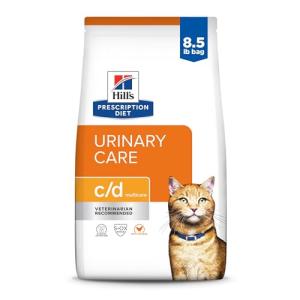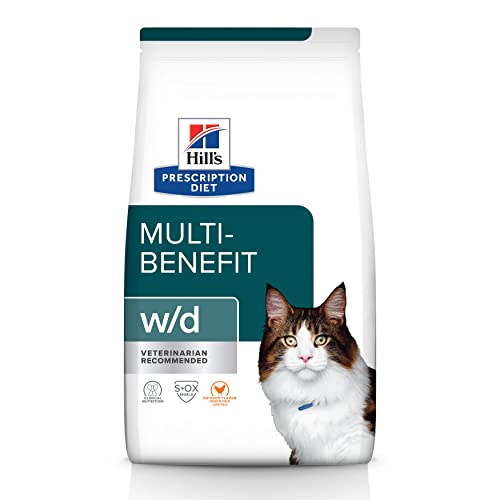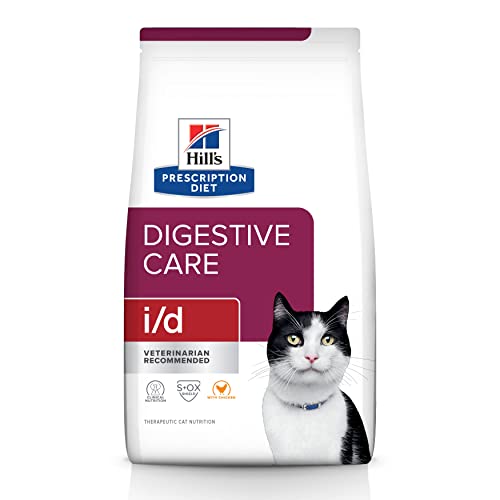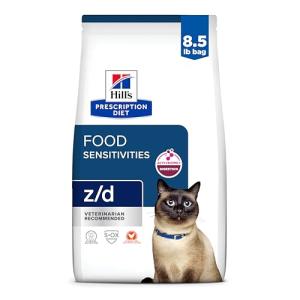Prepare to be charmed by a cat that's wonderfully different – the adorable Manx! If you're seeking a feline companion who is not only uniquely captivating but also brimming with personality and affection, look no further than the Manx. Instantly recognizable for their defining trait – their lack of a tail – Manx cats are so much more than just a striking silhouette. They are playful, intelligent, deeply devoted, and possess a certain "dog-like" charm that sets them apart in the feline world. This isn't just about a pet; it's about welcoming a potential "new best friend" into your life, a furry companion who will fill your days with playful antics and your heart with unwavering loyalty. This guide is your invitation to discover the enchanting world of Manx cats, to explore everything that makes them truly special, and to understand why they could be the purrfect addition to your family.
To truly understand the Manx, we must first journey to their mystical origins, steeped in island lore and seafaring tales. The story of the Manx cat begins on the Isle of Man, a small, windswept island nestled in the Irish Sea between England and Ireland. Legend intertwines with history in the Manx's past, with numerous colourful stories attempting to explain their taillessness. One of the most whimsical tales claims that Manx cats were late to Noah's Ark and, in the rush to board, had their tails accidentally slammed shut in the door by Noah himself! A more grounded, yet equally charming, folklore suggests that tailless cats swam ashore from sinking ships of the Spanish Armada, becoming established on the island. While these stories are delightful, the scientific reality is far simpler: the Manx cat's taillessness is the result of a natural genetic mutation that spontaneously occurred within the island's cat population. Due to the Isle of Man's isolated location, this gene became prevalent among the local feline inhabitants, solidifying taillessness as a defining characteristic. Beyond folklore, Manx cats have a tangible historical significance on the Isle of Man. They were not merely pets but were valued as working cats, adept mousers protecting farms and homes from rodents. Their sturdy build and agile nature made them well-suited to island life. For islanders, they became more than just working animals; they were island companions, woven into the fabric of Manx life. In more recent times, breeders have intentionally developed and refined the Manx breed, preserving its unique traits and promoting it beyond its island home. Today, the Manx is recognized by cat fancier organizations worldwide, celebrated for its distinctive appearance and endearing personality, a legacy stemming from its humble beginnings on a small island in the Irish Sea.
The most defining and instantly recognizable feature of the Manx cat is, without question, their taillessness. However, it's important to understand that “tailless” is not a simple binary but rather a spectrum, with various tail types recognized within the breed. The genetic mutation responsible for the Manx's lack of a tail manifests in fascinatingly diverse ways, leading to different classifications. The most prized and show-standard tail type is the "Rumpy" Manx, which is completely tailless. In a true Rumpy, there is no tail whatsoever, not even a hint of a bone – often, you'll find a slight dimple at the very end of the spine where a tail would typically begin. Slightly less tailless, but still considered highly desirable, is the "Rumpy Riser." These Manx have a slight rise of bone at the base of their spine, where a tail would be, but it's typically hidden under fur. You might feel a small bony protrusion when petting them, often consisting of a few fused vertebrae. Moving further along the tail spectrum, we encounter the "Stumpy" Manx. These cats possess a short, often kinked or fused tail composed of several vertebrae, typically only a few inches long. Finally, and perhaps surprisingly, there are "Longy" or "Tailed" Manx. These cats possess tails of nearly normal length. While they don't conform to show standards that heavily favor taillessness, they are still genetically Manx, carrying the same genes and often exhibiting the distinctive Manx temperament and body type. It’s crucial to understand that all these variations – Rumpy, Rumpy Riser, Stumpy, and Longy – are considered Manx cats. However, for showing purposes, Rumpies and Rumpy Risers are typically favored. It's also fascinating to note that within a single litter of Manx kittens, you might find a range of tail types, highlighting the variable expression of the Manx gene.
Beyond their defining taillessness, Manx cats exhibit a distinctive and appealing physical build. They are described as "cobby," meaning they have a sturdy, compact, and rounded body type. Their body is muscular and well-built, giving them a substantial feel when you pick them up. A unique characteristic is their hind legs, often described as "rabbit-like" or "drumstick" legs, as they are longer than their front legs. This leg structure contributes to their slightly hopping gait and their powerful jumping ability. They possess deep flanks and a broad chest, further enhancing their sturdy and robust appearance. Manx cats come in two recognized coat types: shorthair and longhair. The shorthair Manx boasts a dense, double coat that is short, plush, and resilient. This coat type is relatively low-maintenance, requiring less grooming than longhaired varieties. The longhair Manx, often referred to as the Cymric (though sometimes considered a separate breed, many registries consider it a longhaired Manx), exhibits a semi-longhaired, silky double coat. They possess distinctive "breeches" – longer fur on their hind legs – as well as ear and toe tufts, and if they have a tail, it is typically plume-like. Despite the difference in length, both coat types share a dense and resilient texture, providing excellent insulation and protection. Manx cats come in a wide array of coat colors and patterns, essentially encompassing almost all feline coat variations. You can find Manx in classic tabby patterns, striking tortoiseshell markings, solid colors ranging from black to white and everything in between, and many other appealing combinations. Their wide, round heads are another distinguishing feature, contributing to their overall endearing appearance. Their ears are wide-set and medium-sized, slightly rounded at the tips, adding to their alert and expressive face. Manx eyes are large, round, and expressive, with eye color ideally harmonizing with their coat color, further enhancing their overall aesthetic appeal. Finally, many Manx owners describe their cats as having a perpetual "smiling" expression, a subtle upturn to their mouths that reflects their generally happy and amiable disposition, completing the picture of this truly adorable and distinctive breed.
However, the physical attributes of the Manx are just the prelude to the truly captivating aspect of this breed: their personality. Manx cats are renowned for their endearing temperament, a blend of playful energy, keen intelligence, unwavering loyalty, and a dash of "dog-like" devotion, making them exceptional companions for the right owner. Playfulness is deeply ingrained in the Manx character. They are not sedentary lap cats content to simply snooze the day away. Manx cats are known for being active and energetic, retaining a kitten-like zest for playfulness throughout their adult lives. They thrive on games, readily engaging in chasing toys, batting at dangling objects, and participating enthusiastically in interactive play sessions with their owners. Their playful nature ensures they are always ready for fun and games, making them engaging and entertaining companions. Intelligence is another hallmark of the Manx personality. They are highly intelligent cats, quick to learn and eager to engage their minds. This intelligence translates into trainability. Manx cats are known to be among the more trainable feline breeds, capable of learning tricks, leash walking, and even responding to basic commands like "come" or "stay." Providing puzzle toys and opportunities for mental stimulation is crucial for keeping their intelligent minds occupied and preventing boredom. Their sharp intellect contributes to their engaging and interactive nature, making them a joy to train and interact with. Loyalty and devotion are cornerstones of the Manx temperament. They are cats who form incredibly strong bonds with their families, often becoming deeply attached to their chosen people. Manx cats are known for being remarkably devoted, often described as "one-person" cats, intensely bonding with a single individual, or forming strong connections with the entire family unit, depending on their individual personalities and upbringing. Their loyalty translates into a deep desire to be near their loved ones, always seeking companionship and affection.
Adding to their unique charm, Manx cats frequently exhibit "dog-like" qualities, blurring the lines between feline grace and canine devotion. Much like their canine counterparts, Manx cats are known to follow their owners around the house, acting as loyal shadows, always wanting to be in close proximity and involved in household activities. They often greet their owners at the door upon their return home, a heartwarming welcome typically associated with dogs rather than cats. Intriguingly, they can even be trained to fetch, retrieving toys and bringing them back to their owners for repeated rounds of play, further cementing their "dog-like" reputation. This combination of loyalty, trainability, and a desire to be actively involved in their family’s lives distinguishes them from more aloof or independent cat breeds. Despite these "dog-like" traits, it's essential to remember that Manx cats remain distinctly feline. They retain the inherent independence and grace that characterize cats, balancing their loyalty and devotion with a certain feline self-possession. They are not overly clingy or needy, but rather offer a beautiful blend of affection and feline dignity. While generally known for being gentle and good-natured, especially with families, early socialization remains important for Manx cats. They are often considered good with children and other pets, especially when raised alongside them from kittenhood. Their sturdy build often makes them more tolerant of gentle handling, a bonus for families with children. However, individual personalities always vary, and proper socialization from a young age helps ensure a well-adjusted and friendly Manx companion. Finally, communication is key with Manx cats, and while they are vocal, they are typically not considered overly talkative compared to some breeds known for constant meowing. They communicate effectively using a variety of chirps, trills, and soft purrs, letting you know their needs and desires in a gentler, less demanding manner. This balanced vocalization contributes to their overall pleasant and companionable nature, making them excellent communicators without being excessively noisy.
Before you eagerly welcome a Manx cat into your home, it's essential to honestly assess whether this breed aligns with your lifestyle and expectations. The advantages of Manx ownership are numerous and compelling. Their playful and entertaining nature ensures a lively and engaging companion, always ready for fun. Their intelligence and trainability offer opportunities for interactive engagement and bonding. Their loyal and devoted personalities provide deep and meaningful companionship. Compared to some high-maintenance breeds, Manx cats, particularly shorthairs, are relatively low-maintenance when it comes to grooming. They are generally adaptable to indoor living and can thrive in various household types, from apartments to larger homes. And, of course, their unique and adorable appearance is undeniably captivating, a constant source of charm and delight. However, responsible pet ownership requires acknowledging potential downsides and considerations. Perhaps the most significant concern is the potential for "Manx Syndrome," a health condition intrinsically linked to their taillessness. While not all Manx cats are affected, the risk is present and must be carefully considered (we will discuss this in detail later). Their activity levels mean Manx cats need dedicated playtime and mental stimulation. They are not content to be purely lap cats and require active engagement from their owners. While shorthair Manx are relatively low-grooming, longhair Manx (Cymric) do shed more and require regular brushing to prevent mats and tangles. Their sturdy build, while contributing to their charm, can sometimes lead to a degree of clumsiness. While agile, their cobby build is not as lithe as some breeds, and occasional bumps or slightly less graceful landings may occur. Like all cats, early socialization is crucial for Manx cats to ensure they develop into well-adjusted and friendly companions.
To help you determine if a Manx is the right best friend for you, consider this lifestyle compatibility checklist. An active household that can provide ample playtime and interaction is ideal for a Manx. Owners who appreciate an intelligent and trainable cat and are willing to engage in interactive activities will find a kindred spirit in a Manx. Families who can provide consistent care, attention, and a stable home environment are well-suited to Manx cats. Homes prepared to understand and address the potential health issues associated with Manx Syndrome are essential. Finally, consider your personal preferences. If you are seeking a playful, interactive, and devoted cat, rather than a purely lap-bound feline, a Manx might be the perfect match.
Caring for your Manx best friend is a rewarding endeavor, requiring an understanding of their specific needs to ensure a happy and healthy life. Grooming for Manx cats is relatively straightforward, especially for shorthair varieties. Shorthair Manx benefit from weekly brushing to remove loose fur and maintain coat health. A simple rubber brush or grooming mitt is often sufficient. Longhair Manx (Cymric) require slightly more attention, needing brushing 2-3 times a week to prevent mats and tangles, particularly in their breeches and plume (if tailed). A slicker brush and comb are helpful tools for longhaired Manx grooming. Nail trimming should be performed as needed, typically every few weeks, for all Manx cats. Ear cleaning should be done periodically, only as needed, to remove any wax buildup. Bathing is generally infrequent for Manx cats, only necessary if they get particularly dirty or smelly.
Feeding and nutrition are crucial for maintaining the energy levels of these active cats. Provide your Manx with high-quality cat food appropriate for their age (kitten, adult, senior) and activity level. Choose a formula that is rich in protein to support their muscular build and energy needs. Portion control is important to prevent obesity, even though Manx cats are generally active. Monitor their weight and adjust food portions accordingly. Ensure fresh, clean water is always readily available. Consider incorporating food puzzles into their feeding routine to engage their intelligence and slow down eating, providing mental stimulation at mealtimes. Exercise and playtime are absolutely key to a Manx cat's well-being. Daily interactive play sessions are crucial to meet their energy needs and keep them happy and stimulated. Provide a variety of toys to keep them engaged, such as feather wands, puzzle toys, balls, and catnip mice. Cat trees, scratching posts, and window perches provide vertical space and enrichment opportunities, allowing them to climb, scratch, and observe their surroundings. If you live in a safe environment and your Manx is amenable, consider leash training them for safe outdoor exploration, providing a change of scenery and further stimulation. Health care for Manx cats should be proactive and preventative. Regular veterinary check-ups and vaccinations are essential for maintaining their overall health. Parasite prevention, including flea, tick, and worm control, should be administered as recommended by your veterinarian. Dental care is crucial. Regular teeth brushing, ideally daily, is highly recommended to maintain their dental health and prevent dental disease. Discuss breed-specific health concerns, particularly Manx Syndrome, with your veterinarian and ensure you understand the potential risks and monitoring required. Consider pet insurance to help manage potential veterinary costs, especially given the potential for Manx Syndrome related issues. Creating a Manx-friendly home environment involves providing a safe and stimulating space. Ensure your home is safe and free from hazards that could be harmful to a cat. Provide comfortable and accessible resting spots throughout the house where they can relax and feel secure. Litter box placement and hygiene are important; ensure enough litter boxes in accessible locations and scoop them daily. Scratching posts and vertical space, like cat trees, are essential for their physical and mental well-being, allowing them to express natural behaviors and stay entertained. If you wish to offer safe outdoor access, consider building a catio (cat enclosure) or ensuring your garden is securely fenced for safe outdoor exploration, or utilize leash walking under your supervision.
When you're ready to find your Manx best friend, your search begins with deciding where to look. Reputable breeders offer the advantage of knowing the kitten’s lineage and health history, but it’s vital to choose responsibly, especially with Manx, due to the risks of Manx Syndrome. Responsible breeders prioritize health and genetic screening and will be transparent about Manx Syndrome risks. However, kittens from reputable breeders typically come with a higher purchase price. Shelters and rescues offer a wonderful alternative, providing a home for a Manx mix or sometimes even a purebred Manx in need. Adoption fees are generally lower, and you are giving a deserving cat a second chance. However, shelter cats’ health histories may be unknown, and purebred Manx are less common in shelters, though mixes are often found. When choosing a breeder, asking specific questions is crucial for Manx cats due to Manx Syndrome. Inquire about the health history of the parents and lineage, specifically regarding Manx Syndrome prevalence in their lines. Ask about the tail type of both parents and the kittens in the litter to understand the range of variations. Discuss temperament and socialization practices used for the kittens. Visit the cattery, if possible, to assess the living environment and observe the kittens and their parents firsthand. Ask about breeder guarantees and health warranties, specifically related to Manx Syndrome, and what support they offer. Red flags to watch out for when choosing a Manx breeder are crucial to recognize to avoid irresponsible breeding practices. Be wary of breeders who are evasive about Manx Syndrome or downplay the potential risks. Avoid breeders who don’t provide health history or offer guarantees related to Manx Syndrome. Steer clear of breeders who raise kittens in unclean or neglectful conditions. Be cautious of breeders unwilling to answer your questions thoroughly or allow visits to their cattery. Avoid breeders selling unhealthy or poorly socialized kittens, and be wary of prices that are significantly lower than average breeder prices, as this can be indicative of less responsible breeding practices. Adoption presents itself as a truly loving option when considering a Manx. Adopting an adult Manx offers the benefit of a more established personality, making it easier to assess temperament and needs. You may find Manx mixes, and occasionally purebred Manx, in shelters or breed-specific rescues. Adoption fees are generally lower than breeder prices, and you are providing a loving home to a cat in need. Older cats in shelters may be less likely to develop severe Manx Syndrome if they have lived healthily to adulthood, but always inquire about their health history. Finally, consider the cost implications. The initial purchase price from a breeder will be higher than adoption fees. Factor in ongoing costs of cat ownership, including food, litter, veterinary care, grooming, toys, and potentially higher veterinary costs related to Manx Syndrome, and consider if pet insurance would be a prudent choice.
Stepping beyond the basics, there's even more to appreciate about Manx cats. Manx kittens are undeniably bundles of energy, playful and often remarkably active from a very young age. Socialization is particularly crucial during kittenhood to ensure they develop into well-rounded and friendly adult cats. Observing a litter of Manx kittens is fascinating as you can often see the variety of tail types within a single litter, a tangible demonstration of the Manx gene's variable expression. The kitten phase is short but incredibly mischievous and adorable – cherish these fleeting moments! Manx Syndrome is a crucial health consideration that requires a deeper understanding. Manx Syndrome is not a disease in itself but rather a term used to describe a collection of congenital abnormalities that can occur due to the spinal gene mutation responsible for taillessness. This mutation can sometimes, and especially in more extreme taillessness like Rumpies, affect spinal cord development. Neurological issues are the primary concern in Manx Syndrome, potentially including spina bifida (incomplete closure of the spinal cord), and other spinal cord abnormalities. These issues can affect hind legs, bowel and bladder control. It's crucial to understand that the severity of Manx Syndrome varies greatly. It ranges from severe cases where kittens are sadly not viable at birth, to moderate cases with manageable health issues, to mild cases with minimal or no apparent symptoms throughout their lives. Rumpy and Rumpy Riser Manx, being the most tailless, are statistically at higher risk of experiencing Manx Syndrome than Stumpies or Longies. Signs and symptoms to watch for, particularly in kittens, include incontinence (bowel and bladder issues), difficulty walking or exhibiting an unusual hopping gait, weakness in their hind legs, and constipation. Diagnosis of Manx Syndrome is made by a veterinarian, and management focuses on supportive care, medication to manage symptoms, and in milder cases, sometimes surgery can be beneficial. Ethical breeding is absolutely crucial in Manx cats to minimize the risk of Manx Syndrome. Responsible breeders prioritize health, carefully select breeding pairs to reduce risk, are transparent about potential risks, and will often avoid breeding two Rumpy to Rumpy matings. It is vital to emphasize that not all Manx cats will develop Manx Syndrome. Many Manx cats, particularly those with longer tail types (Stumpies, Longies) and when responsibly bred, live full, healthy lives without ever showing signs of the condition.
Finally, Manx cats are filled with fun facts and quirks that make them even more endearing. They are often affectionately nicknamed "rabbit cats" due to their hopping gait and longer hind legs, reminiscent of a rabbit's locomotion. They have a long-standing reputation as excellent hunters and mousers, a trait stemming from their working cat history and sometimes still evident in their keen hunting instincts today. Anecdotes abound about their playful nature, intelligence, and almost dog-like loyalty, further solidifying their unique charm. Their adaptability and resilience as a breed are testaments to their long history and island origins. While there are no widely recognized "famous" Manx cats in popular culture, their enduring appeal ensures they have countless devoted fans and owners who appreciate their distinctive qualities and unwavering affection.
In conclusion, the Manx cat is a breed of captivating contradictions – tailless yet wonderfully whole, sturdy yet agile, fiercely loyal yet retaining feline grace. Their key traits – taillessness, a playful and intelligent personality, and their deeply loyal companionship – make them truly exceptional and memorable feline partners. However, responsible consideration of Manx ownership necessitates a thorough understanding of their unique breed characteristics and, most importantly, the potential for Manx Syndrome. The joys and rewards of Manx companionship are profound for the right owner. Their adorable nature, engaging personalities, and "best friend" potential are undeniable. If you are prepared to appreciate their unique breed traits, seek out a Manx from a responsible source – whether a breeder or rescue – and embrace the commitment of care, you may just discover your new best friend in this wonderfully different and utterly delightful feline. Take the time to research further, connect with reputable breeders or shelters, and thoughtfully consider if your home and heart are ready to welcome the magic of a Manx cat into your life.







